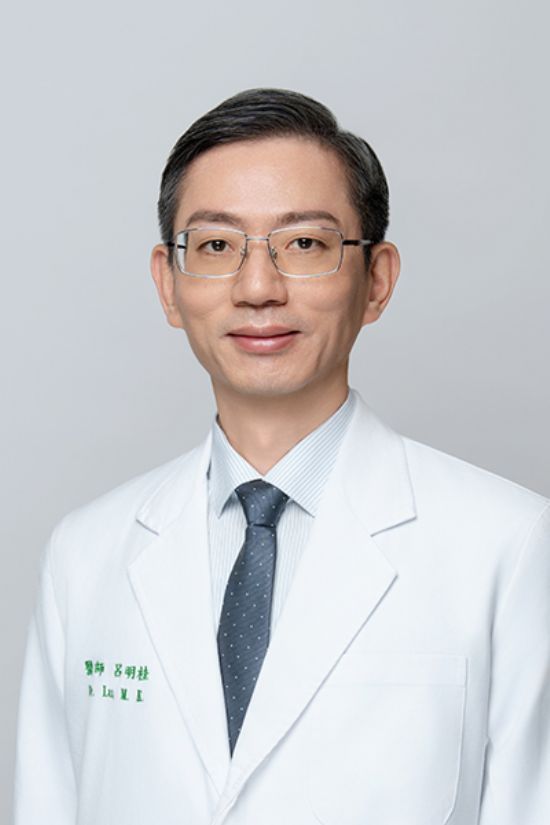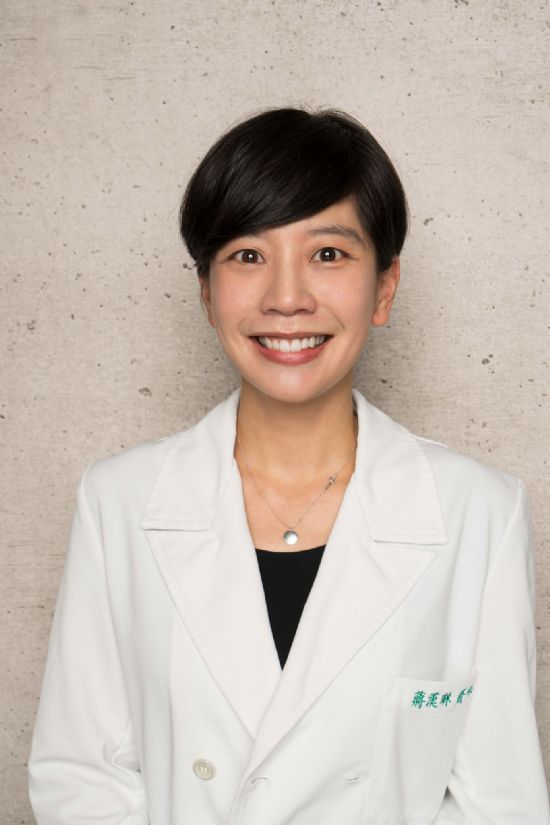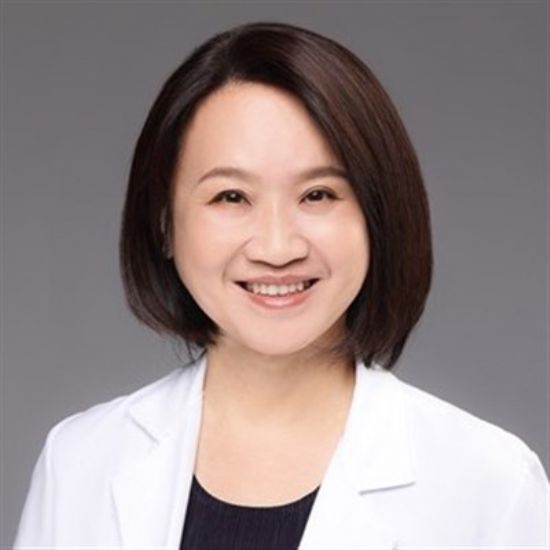Time slot's time in Taipei (GMT+8)
2025/11/21 08:30-13:00 Room 101 CD
- Kick-on Seminar II
Ultrasound: Technique Consideration and Clinical Significance
- Time
- Topic
- Speaker
- Moderator
- 08:30-09:00
- Transcranial ultrasound stimulation (TUS): clinical facilitation set up and practice guideline
- Speaker:
Lennart Verhagen
- Moderator:
Yoshikazu Ugawa
- Yoshikazu Ugawa
- MD, PhD
-
Professor Emeritus, Fukushima Medical University/Department of Human Neurophysiology
E-mail:ugawatky2@gmail.com
Executive Summary:
oshikazu Ugawa, MD, a Director and Professor, Department of Human Neurophysiology, Fukushima Medical University, Fukushima, Japan. He enjoyed the disaster of the earthquake 2011, Japan and still lives in Fukushima. He studied physiology of movement disorders under Professor Marsden and Professor Rothwell in Queen Square, London in 1987-1990. He received PhD from the University of Tokyo in 1992. He was a Director and Professor of Department of Neurology, Fukushima Medical University from 2007 to 2018. He has been a director of Department of Human Neurophysiology from 2019. He was the secretary general of the International Federation of Clinical Neurophysiology (IFCN) from 2014 to 2017, he has been a chair of brain stimulation SIG of IFCN since 2017 and an associate editor of Clinical Neurophysiology since 2006, and he is now the president of AO chapter of IFCN.
His main interest is a non-invasive brain stimulation, such as TMS and newly developed transcranial ultrasound stimulation (TUS). His clinical interest is movement disorders and has published around 490 papers in international journals, his H-index is 71.
oshikazu Ugawa, MD, a Director and Professor, Department of Human Neurophysiology, Fukushima Medical University, Fukushima, Japan. He enjoyed the disaster of the earthquake 2011, Japan and still lives in Fukushima. He studied physiology of movement disorders under Professor Marsden and Professor Rothwell in Queen Square, London in 1987-1990. He received PhD from the University of Tokyo in 1992. He was a Director and Professor of Department of Neurology, Fukushima Medical University from 2007 to 2018. He has been a director of Department of Human Neurophysiology from 2019. He was the secretary general of the International Federation of Clinical Neurophysiology (IFCN) from 2014 to 2017, he has been a chair of brain stimulation SIG of IFCN since 2017 and an associate editor of Clinical Neurophysiology since 2006, and he is now the president of AO chapter of IFCN.
His main interest is a non-invasive brain stimulation, such as TMS and newly developed transcranial ultrasound stimulation (TUS). His clinical interest is movement disorders and has published around 490 papers in international journals, his H-index is 71.
Lecture Abstract:
Transcranial ultrasound stimulation (TUS) is a newly developed non-invasive brain stimulation method which enables us to perform a localized deep brain structure activation. Several stimulation parameters have been reported to induce long-lasting enhancement or reduction of the neural structures below the stimulation point. We have no standard stimulation protocols for specific clinical goals at present. Then, in this talk, I will introduce a new intervention method (decapulse stimulation (DPS)) and several clinical applications of TUS.
Decapluse stimulation (DPS): We developed a novel patterned TUS protocol capable of inducing bidirectional plasticity in M1. Two protocols, with a stimulation pattern comprising 10 pulses of ultrasound (decapulse stimulation, DPS), used the same intensity of ultrasound, fundamental frequency (0.5 MHz), net and total sonication duration (8 and 400 s), overall duty cycle (2%), but differed in pulse train duration (1 vs. 400 s), pulse repetition frequency (200 vs. 10 Hz). (DPS5 and DPS100). DPS5 induced enhancement of cortical MEP, whereas DPS100 induced reduction of cortical MEP, lasting 60 to 90 minutes after sonication. Neither threshold, short interval intracortical inhibition (SICI), intracortical facilitation (ICF), nor short interval intracortical facilitation (SICF) was affected by DPSs. The findings suggested a novel mechanism of plasticity induction applicable for clinical use, in which TUS patterns induce bidirectional effects without affecting intracortical synaptic functions probably mediated by different intracellular calcium influx patterns.
Clinical applications of TUS: For around 10 years after TUS invention, it has been used for functional studies in normal subjects, pathophysiological studies in patients, and treatment trials because of its capability to induce functional changes in the deep brain structures. The hippocampal stimulation or amyloid clearance by blood brain barrier opening in Alzheimer's disease, localized stimulation of epileptic foci, and other applications have been reported. I will show a few examples of the above applications.
Transcranial ultrasound stimulation (TUS) is a newly developed non-invasive brain stimulation method which enables us to perform a localized deep brain structure activation. Several stimulation parameters have been reported to induce long-lasting enhancement or reduction of the neural structures below the stimulation point. We have no standard stimulation protocols for specific clinical goals at present. Then, in this talk, I will introduce a new intervention method (decapulse stimulation (DPS)) and several clinical applications of TUS.
Decapluse stimulation (DPS): We developed a novel patterned TUS protocol capable of inducing bidirectional plasticity in M1. Two protocols, with a stimulation pattern comprising 10 pulses of ultrasound (decapulse stimulation, DPS), used the same intensity of ultrasound, fundamental frequency (0.5 MHz), net and total sonication duration (8 and 400 s), overall duty cycle (2%), but differed in pulse train duration (1 vs. 400 s), pulse repetition frequency (200 vs. 10 Hz). (DPS5 and DPS100). DPS5 induced enhancement of cortical MEP, whereas DPS100 induced reduction of cortical MEP, lasting 60 to 90 minutes after sonication. Neither threshold, short interval intracortical inhibition (SICI), intracortical facilitation (ICF), nor short interval intracortical facilitation (SICF) was affected by DPSs. The findings suggested a novel mechanism of plasticity induction applicable for clinical use, in which TUS patterns induce bidirectional effects without affecting intracortical synaptic functions probably mediated by different intracellular calcium influx patterns.
Clinical applications of TUS: For around 10 years after TUS invention, it has been used for functional studies in normal subjects, pathophysiological studies in patients, and treatment trials because of its capability to induce functional changes in the deep brain structures. The hippocampal stimulation or amyloid clearance by blood brain barrier opening in Alzheimer's disease, localized stimulation of epileptic foci, and other applications have been reported. I will show a few examples of the above applications.
- Time
- Topic
- Speaker
- Moderator
- 09:00-09:30
- Clinical application of TUS: different devices, preferential parameters, and specific goals
- Speaker:
Yoshikazu Ugawa
- Moderator:
Ming-Kuei Lu
- Ming-Kuei Lu
- MD, PhD
-
Director, Division of Neurology, Taichung Municipal Geriatric Rehabilitation General Hospital, China Medical University
E-mail:mingkuei.lu@gmail.com
Executive Summary:
Dr. Lu graduated from China Medical University and received neurological resident training in China Medical University Hospital (CMUH), Taichung, Taiwan. In addition to the clinical practice experience, he also pursued his research training focusing on clinical neurophysiology. His research interests include pathophysiology of movement disorders and noninvasive neuromodulation. He applied EEG, TMS and MR-guided focused ultrasound to investigate and monitor neurodegenerative disorders, focusing on Parkinson’s disease and essential tremor. He has some publications regarding this field. He is currently a faculty of College of Medicine in CMU and an active member of Taiwan Society of Clinical Neurophysiology and Taiwan Movement Disorder Society.
Dr. Lu graduated from China Medical University and received neurological resident training in China Medical University Hospital (CMUH), Taichung, Taiwan. In addition to the clinical practice experience, he also pursued his research training focusing on clinical neurophysiology. His research interests include pathophysiology of movement disorders and noninvasive neuromodulation. He applied EEG, TMS and MR-guided focused ultrasound to investigate and monitor neurodegenerative disorders, focusing on Parkinson’s disease and essential tremor. He has some publications regarding this field. He is currently a faculty of College of Medicine in CMU and an active member of Taiwan Society of Clinical Neurophysiology and Taiwan Movement Disorder Society.
- Time
- Topic
- Speaker
- Moderator
- 09:30-10:00
- TUS with single or dural targets: the insights from MR-Guided focus ultrasound in PD
- Speaker:
Jui-Cheng Chen
- Moderator:
Helen Chiang
- Helen Chiang
- MD, MSc
-
Attending physician, Taipei Veterans General Hospital
E-mail:yorkiego@gmail.com
Executive Summary:
Dr. Chiang graduated from Taipei Medical University and received her neurology residency training at
Chang Gung Memorial Hospital, Linkou branch. She became an attending neurologist in the Neurology
Department of Taipei Tzu Chi General Hospital and later changed gears to Taipei Veterans General
Hospital in 2018. She was trained as a movement disorders clinical fellow in the Movement Disorder Unit
of Westmead Hospital, Australia, with Prof. Victor Fung from 2014 to 2015. After returning from Sydney,
she went on to pursue her master’s degree at National Taiwan University with Prof. Chin-Hsien Lin.
Dr. Chiang graduated from Taipei Medical University and received her neurology residency training at
Chang Gung Memorial Hospital, Linkou branch. She became an attending neurologist in the Neurology
Department of Taipei Tzu Chi General Hospital and later changed gears to Taipei Veterans General
Hospital in 2018. She was trained as a movement disorders clinical fellow in the Movement Disorder Unit
of Westmead Hospital, Australia, with Prof. Victor Fung from 2014 to 2015. After returning from Sydney,
she went on to pursue her master’s degree at National Taiwan University with Prof. Chin-Hsien Lin.
- Time
- Topic
- Speaker
- Moderator
- 10:30-11:00
- Research-Driven Clinical Applications of High-Resolution Ultrasound in Neuromuscular Disorders
- Speaker:
Byung Jo Kim
- Moderator:
Rou-Shayn Chen
- Rou-Shayn Chen
- E-mail:cerebrum@ms13.hinet.net
- Time
- Topic
- Speaker
- Moderator
- 11:00-11:30
- The hierarchy of guidance techniques in Botulinum toxin A injection of limb spasticity
- Speaker:
Ting-Yu Chang
- Moderator:
Yih-Ru Wu
- Yih-Ru Wu
- MD
-
Director of Department of Neurology, , Chang Gung Memorial Hospital , Linkou Medical Center
E-mail:yihruwu@cgmh.org.tw
Executive Summary:
Dr. Wu completed her neurology training at the Department of Neurology, Chang Gung Memorial Hospital, LinKou Medical Center, from 1990 to 1994 and has been serving as an attending physician there since then. She undertook a one-year research fellowship at the Movement Disorders Center, Toronto Western Hospital, from 1998 to 1999. Her research focuses on the genetics of Parkinson’s disease (PD) and other movement disorders, as well as non-motor symptoms and clinical research in PD.
Dr. Wu has authored over 240 peer-reviewed articles in Science Citation Index journals and has served as a reviewer for more than 50 such journals. She is currently on the editorial board of npj Parkinson’s Disease and serves as an associate editor for Frontiers in Neurology. From 2015 to 2017, she served as the president of the Taiwan Movement Disorder Society. Within the MDS-AOS, she has held roles on the Education Committee (2011–2015), Executive Committee (2015–2019), and Web Editorial Committee (2015–2019). Additionally, she has contributed to the World Federation of Neurology through the Education and Publications Committees. She served as Secretary Elect of MDS-AOS from 2019 to 2021 , Secretary of MDS-AOS from 2021 to 2023, Chair elect of MDS-AOS from 2023 to 2025.
Currently, she serves as a Professor at Chang Gung University College of Medicine, Director of the Department of Neurology at Chang Gung Memorial Hospital, Linkou Branch, and Chair of the MDS Asian and Oceanian Section (MDS-AOS) since Oct 2025.
Dr. Wu completed her neurology training at the Department of Neurology, Chang Gung Memorial Hospital, LinKou Medical Center, from 1990 to 1994 and has been serving as an attending physician there since then. She undertook a one-year research fellowship at the Movement Disorders Center, Toronto Western Hospital, from 1998 to 1999. Her research focuses on the genetics of Parkinson’s disease (PD) and other movement disorders, as well as non-motor symptoms and clinical research in PD.
Dr. Wu has authored over 240 peer-reviewed articles in Science Citation Index journals and has served as a reviewer for more than 50 such journals. She is currently on the editorial board of npj Parkinson’s Disease and serves as an associate editor for Frontiers in Neurology. From 2015 to 2017, she served as the president of the Taiwan Movement Disorder Society. Within the MDS-AOS, she has held roles on the Education Committee (2011–2015), Executive Committee (2015–2019), and Web Editorial Committee (2015–2019). Additionally, she has contributed to the World Federation of Neurology through the Education and Publications Committees. She served as Secretary Elect of MDS-AOS from 2019 to 2021 , Secretary of MDS-AOS from 2021 to 2023, Chair elect of MDS-AOS from 2023 to 2025.
Currently, she serves as a Professor at Chang Gung University College of Medicine, Director of the Department of Neurology at Chang Gung Memorial Hospital, Linkou Branch, and Chair of the MDS Asian and Oceanian Section (MDS-AOS) since Oct 2025.
- Time
- Topic
- Speaker
- Moderator
- 11:30-12:00
- Ultrasound-guided techniques in chronic pain management: an update of what is new
- Speaker:
Chih-Peng Lin
- Moderator:
Chi-Chao Chao
- Chi-Chao Chao
- MD, PhD.
-
Director, Neuromuscular Division, Department of Neurology, National Taiwan University Hospital
E-mail:ccchao@ntu.edu.tw
Executive Summary:
Chi-Chao Chao is an attending neurologist in the Department of Neurology at National Taiwan University Hospital, Taipei, Taiwan. Dr. Chao graduated with his medical degree at the National Taiwan University School of Medicine, and received his PhD training from the National Taiwan University College of Medicine Graduate Institute of Clinical Medicine. He completed his residency in the Department of Neurology at National Taiwan University Hospital and was a Postdoctoral Research Fellow at the Humor Motor Control Section of the National Institute of Health, USA, from 2011-2012. Dr. Chao’s research interests are clinical neurophysiology, peripheral neuropathy and neuropathic pain. He has applied pathologic and physiological tools to explore the pathophysiology of variable neuropathic disorders and dissect the mechanism of peripheral and central neuropathic pain.
Chi-Chao Chao is an attending neurologist in the Department of Neurology at National Taiwan University Hospital, Taipei, Taiwan. Dr. Chao graduated with his medical degree at the National Taiwan University School of Medicine, and received his PhD training from the National Taiwan University College of Medicine Graduate Institute of Clinical Medicine. He completed his residency in the Department of Neurology at National Taiwan University Hospital and was a Postdoctoral Research Fellow at the Humor Motor Control Section of the National Institute of Health, USA, from 2011-2012. Dr. Chao’s research interests are clinical neurophysiology, peripheral neuropathy and neuropathic pain. He has applied pathologic and physiological tools to explore the pathophysiology of variable neuropathic disorders and dissect the mechanism of peripheral and central neuropathic pain.









